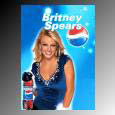Comparative advertising, as the name suggests, is advertising where a party (the advertiser) advertises his goods or services by comparing them with the goods or services of another party. Such other party is usually his competitor and is often the market leader in the particular trade. The comparison is made with a view towards increasing the sales of the advertiser. This is typically done by either suggesting that the advertiser’s product is of the same or a superior quality to that of the compared product or by denigrating the quality of the compared product.


The more blatant form of comparative advertising refers to the product by name and this is generally known as comparative brand advertising. However using or referring to a specific trademark or brand name does not always do this. Comparative advertising can, however, also occur without any use of the trademark at all, for example, a motorcar manufacturer might compare his product with the “luxury German cars” on the market. Captain Cook for example when it first launched on the Indian market used an advertisement that made an overt reference to Tata Salt by showing a package that looked exactly like it. As such advertising does not contain any trademarks it is not relevant to the law of trademarks (it may, however, constitute a breach of the code of ethics of the ASA (the Advertising Standards Agency)).
Comparative brand advertising does not have to be limited to the use of the identical trademark, as imaginative advertisers will often rely on a play of words.
There is also the possibility that comparative advertising could constitute infringement where the registered trademark is well known. A more classic example of comparative advertising constituting dilution would be “XYZ shoes, the Rolls Royce of shoes”. Accepting that Rolls Royce is a well-known trademark, the fact that there is no similarity between shoes and motor vehicles would not preclude the proprietor of the trademark Rolls Royce from objecting to the use of its well-known trademark in this context.
In conclusion, virtually any misuse of a person’s registered trademark in advertising can constitute trademark infringement and advertisers are advised to be well aware of this fact.
Although the ASA now has many laws governing advertising codes, a simple benchmark that has often been held up in a court of law is that a business would be permitted to use the name of a competitor and describe the competitor’s products in an ad, even though the comparison will likely point out the competing product’s or service’s inferiority, as long as there is no likelihood that a consumer would believe the advertiser is also selling the competing product or service and as long as the statements made are accurate.
In a landmark case where a famous art critic stated that a particular painting was a forgery and the sale of that painting fell through, the critic was sued successfully for the painting owner’s lost profits. It should be noted that for a disparaging remark to be actionable, it must be both untrue and believed by a reasonable person. If the statement made was so outlandish as to be unbelievable, it is unlikely the owner whose product was disparaged will be able to prove any injury. Thus, if a car manufacturer claimed its competitor’s vehicle was so poorly constructed that it literally fell apart within the first week of use, the likelihood is that this gross exaggeration would not be believed and, therefore, would not be actionable. Disparaging of existing products is common in the Indian context especially in the case of FMCG products where a crowded market forces manufacturers to use comparative advertising to distinguish and differentiate their product from others. Ariel used its launch advertisement to portray a modern “bahu” who preferred a pinch of Ariel vs. a traditional mother-in-law who preferred the “older” method of scrubbing with a cake of soap that no consumer had any difficulty recognizing as Rin.
Be the first to comment on "Comparative Advertising"